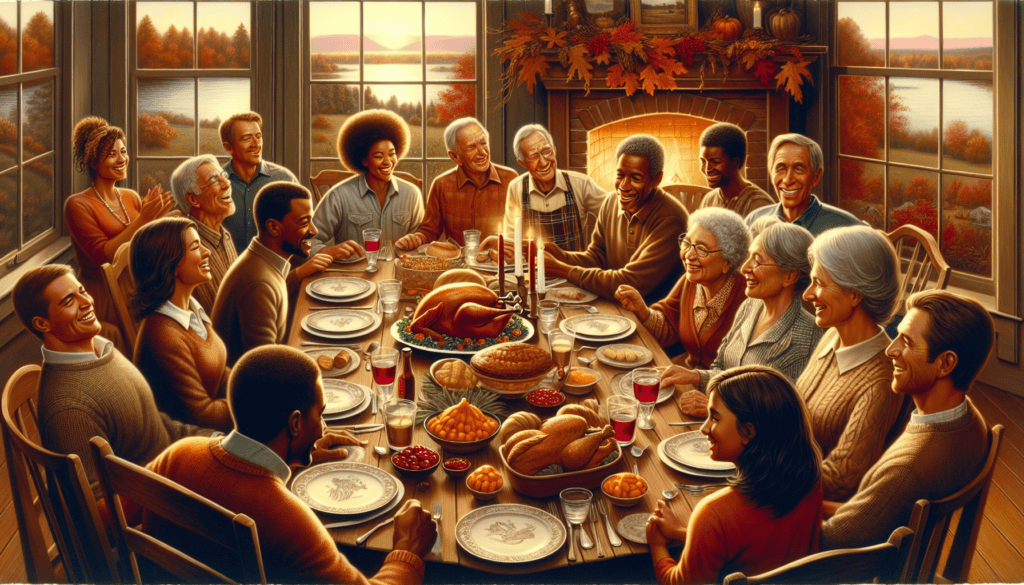I. Introduction
A Brief Overview of Thanksgiving
Thanksgiving, a cherished American holiday, has its roots in a celebration that took place nearly four centuries ago. This annual tradition of gratitude and feasting can be traced back to the autumn of 1621 when the Pilgrims of Plymouth Colony gathered with the Wampanoag people to commemorate their first successful harvest in the New World.
II. The First Thanksgiving
Plymouth Colony, 1621
The event we now recognize as the first Thanksgiving occurred in Plymouth, Massachusetts, in 1621. After a challenging year of establishing their settlement, the Pilgrims had finally reaped a bountiful harvest. To celebrate this achievement and express their gratitude, they organized a three-day feast, which was attended by both the colonists and members of the local Wampanoag tribe.
III. Key Figures in the First Thanksgiving
Pilgrims and Wampanoag Natives
The celebration brought together two distinct groups: the Pilgrims, led by Governor William Bradford, and the Wampanoag people, under the leadership of Massasoit. The Wampanoag had played a crucial role in the Pilgrims’ survival, teaching them essential skills for cultivating crops in the unfamiliar terrain. This gathering symbolized a period of peaceful coexistence between the two communities.
IV. The Harvest Celebration
A Three-Day Feast of Gratitude
Unlike the single-day observance we know today, the first Thanksgiving was an extended celebration lasting three days. The event combined elements of both English harvest festivals and Wampanoag thanksgiving traditions. It was a time for feasting, games, and likely some military exercises, as was customary for English harvest celebrations of the time.
V. Traditional Foods at the First Thanksgiving
What Was Really on the Menu?
While the exact menu of the first Thanksgiving remains a subject of historical debate, it likely differed significantly from modern celebrations. Venison, wild fowl (possibly including wild turkey), fish, and shellfish were probably featured prominently. Native crops such as corn, beans, and squash, along with local fruits and nuts, would have rounded out the meal. Notably absent were many items we now consider Thanksgiving staples, such as cranberry sauce, pumpkin pie, and potatoes.
Click here to get a free turkey
VI. From Local Custom to National Holiday
The Evolution of Thanksgiving
The transformation of Thanksgiving from a localized New England tradition to a national holiday was a gradual process. Throughout the colonial period and early years of the United States, various colonies and states held their own Thanksgiving observances at different times. It wasn’t until the 19th century that efforts to establish a uniform national celebration gained momentum.
VII. Thanksgiving Proclamations
Presidential Declarations and National Observance
Several presidents, including George Washington, issued Thanksgiving proclamations, but it was Abraham Lincoln who established Thanksgiving as a regular national holiday in 1863. Lincoln’s proclamation set the observance for the last Thursday in November, a date that remained consistent until Franklin D. Roosevelt moved it to the fourth Thursday in 1941 to extend the Christmas shopping season.
VIII. Conclusion
The Enduring Spirit of Gratitude
While the historical narrative of Thanksgiving continues to evolve, the holiday’s central theme of gratitude remains constant. Today, Thanksgiving serves as a time for reflection, appreciation, and coming together, embodying the enduring human need to express thankfulness and share in communal celebration. As we continue to navigate the complexities of our shared history, the spirit of gratitude that inspired the first Thanksgiving remains a powerful force in American culture.
